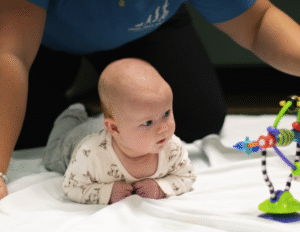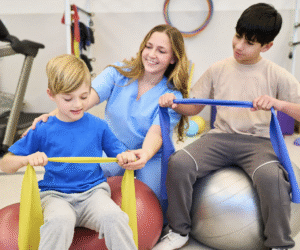Adaptive Yoga
In the spotlight this week is an article about a gentleman, Ryan McGraw, who has cerebral palsy and has found an adaptable method of physical activity, which has been working for him for many years. Ryan is 30 years old and uses adapted yoga for fitness, as well as for therapeutic benefits.
Many people probably have a vision of yoga as being a very difficult activity targeted to a specific population, however, yoga has the potential to be beneficial to several populations if adapted correctly. As yoga can help to impact a person’s strength, flexibility, balance and overall body awareness, we certainly want more people to incorporate this into their weekly physical activities! Now, ensuring positions are being completed correctly and safely is very important in order to avoid injuries. If you are unsure about starting yoga, or pursuing a higher difficulty level, it may be a good idea to discuss yoga with your doctor or physical therapist who could offer ideas for adaptations to best fit your individual physical abilities.
Let’s bring the spotlight back onto Ryan. Ryan has been using yoga with adaptations for years as a fitness method and states, “Of course, we’re not going to look like the people on the cover of yoga magazines posing perfectly when we’re doing yoga. But we don’t have to do the poses in the way that everyone else does as long as we find a way that works for us that gives us the same benefits.”
“…we don’t have to do the poses in the way that everyone else does as long as we find a way that works for us that gives us the same benefits.”
I found this statement to be very powerful as it is easy for someone needing adaptations to feel incompetent when practicing any type of activity. Please don’t feel discouraged! Having the ability to accept the fact that adaptations can be beneficial is so important, especially when trying to increase activity for an individual with a neurological impairment. As we always share, it is easy for a therapist to understand your situation and will even come up with adaptations for their patients. We want everyone to understand that physical activity can go far beyond what may be viewed as “normal”. The whole key to this, is to find a way to make differing forms of physical activity work for yourself and even your family.
Ryan continued to share his own adaptions for yoga and specifically notes chair yoga as one method he utilizes. He loves this adaptive form of yoga because it enables him to use the strength and mobility he has to achieve yoga positions and improve flexibility as well as balance. Chair yoga can be completed while seated in a chair or even by standing while using the chair for extra support.
For those of you interested, I have attached a short video about beginners chair yoga to this blog, or you can click here to watch it. I encourage you to check it out and maybe even try a few positions for yourself. I understand that yoga may be an exercise method not previously considered due to physical barriers, but exploring the options available may change its outlook. Even if yoga isn’t the best exercise for you, I hope hearing about one person’s success with adaptations can help spark your interest to adapt other activities.
Never hesitate to speak with your therapists about activities you would love to enhance or pursue and we would be happy to work with you and customize an adaptive plan to make that happen.
Happy Friday!
Kendell Myers, PT, DPT
Physical Therapist



